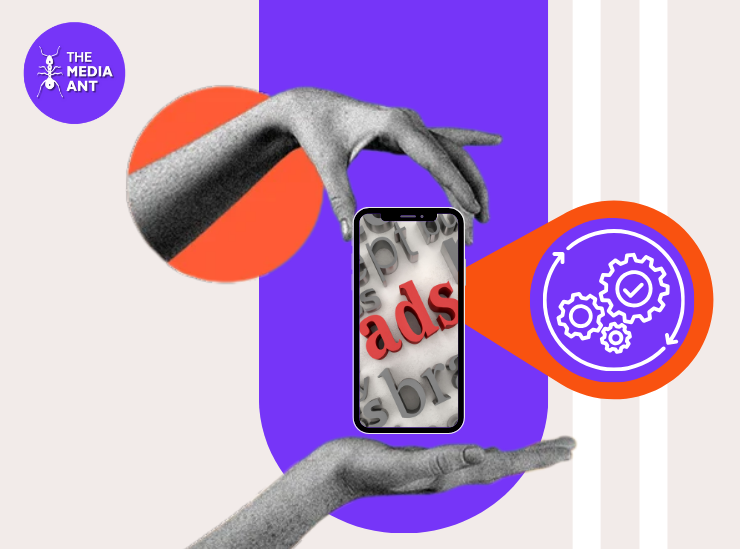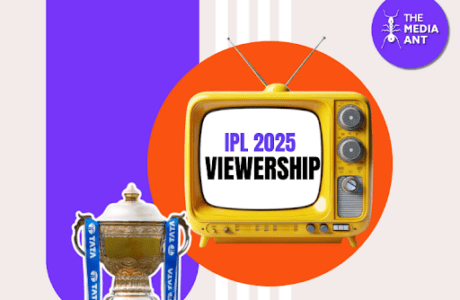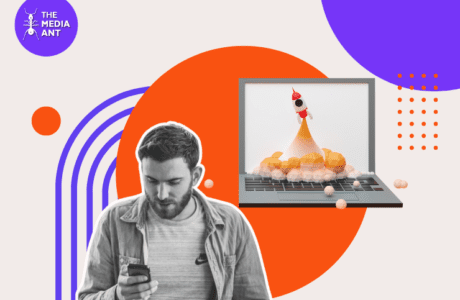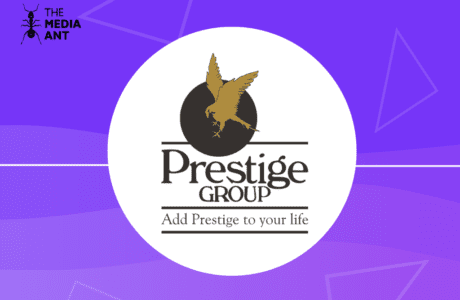What is the Advertising Process?
The advertising process is a structured approach businesses follow to create, execute, and optimize promotional campaigns. It encompasses various stages, from understanding the target audience to refining the campaign based on performance metrics. A well-planned advertising process ensures that marketing efforts generate brand awareness, drive customer engagement, and achieve business goals efficiently.
In this article, we will explore each stage of the advertising process in detail, illustrating them with case studies from around the world. These real-world examples will showcase how different brands have successfully implemented advertising strategies, adjusted their campaigns based on data insights, and optimized their approaches to achieve better results. Whether you’re a marketing professional or a business owner, these insights will help you understand how to craft and execute an effective advertising campaign.
Key Stages of the Advertising Process
Market Research and Audience Analysis
The foundation of any advertising campaign is market research and audience analysis. This stage involves:
- Identifying the target audience based on demographics, psychographics, and behavioral data.
- Conducting surveys, focus groups, and competitor analysis to understand customer needs and preferences.
- Utilizing tools like Google Analytics, social media insights, and third-party reports to gather actionable data.
Case Study: Dove Campaign for Real Beauty
In 2004, Dove embarked on a mission to explore women’s perceptions of beauty. Collaborating with Ogilvy & Mather, they conducted a comprehensive study revealing that only 4% of women considered themselves beautiful. This insight highlighted a significant disparity between societal beauty standards and individual self-perception.
Strategic Response
Armed with this knowledge, Dove launched the “Campaign for Real Beauty,” aiming to redefine beauty standards and promote self-acceptance. The campaign featured real women of diverse ages, sizes, and ethnicities, challenging traditional beauty norms. This approach resonated deeply with audiences, fostering a more inclusive definition of beauty.
Impact and Results
The campaign’s authenticity and relatability led to remarkable outcomes:
- Increased Sales: Dove’s sales soared from $2 billion to $4 billion within the first three years of the campaign.
- Enhanced Brand Perception: The initiative garnered extensive media coverage, generating exposure estimated to be worth more than 30 times the paid-for media space.
Conclusion
This case underscores the transformative power of thorough market research and audience analysis. By understanding and addressing the genuine concerns and desires of their target audience, Dove not only achieved commercial success but also instigated a broader societal conversation about beauty standards.
Incorporating such consumer-driven insights into the advertising process ensures that campaigns resonate authentically, fostering deeper connections between brands and their audiences.
Setting Clear Advertising Objectives
Once the audience is defined, the next step is to set clear advertising objectives. These objectives should follow the SMART criteria:
- Specific: What do you want to achieve? (e.g., Increase website traffic by 30%)
- Measurable: Can the success be quantified?
- Achievable: Are the goals realistic?
- Relevant: Do they align with the overall marketing strategy?
- Time-bound: What is the timeframe for achieving these goals?
Case Study: Carlsberg’s Old Lions Campaign
In 2006, ahead of the FIFA World Cup, Carlsberg aimed to strengthen its association with football and increase beer sales in the UK market. To achieve this, they launched the “Old Lions” campaign, featuring veteran English footballers in a nostalgic and motivational advertisement.
Setting Clear Advertising Objectives: Carlsberg established a SMART objective for the campaign:
- Specific: Enhance brand association with football and increase beer sales in the UK during the World Cup period.
- Measurable: Achieve a 4% increase in market share and a 10% rise in sales compared to the previous year.
- Achievable: Leverage the national excitement surrounding the World Cup and the nostalgic appeal of legendary footballers to connect with the target audience.
- Relevant: Align with Carlsberg’s brand identity as a prominent supporter of football and cater to the interests of football fans.
- Time-bound: Implement the campaign to run from two months before the World Cup kickoff through the tournament’s conclusion.
Strategy and Execution:
- Engaging Content: The centerpiece of the campaign was a 180-second commercial titled “Old Lions,” depicting former England football stars training under the guidance of iconic manager Bobby Robson. The ad evoked a sense of pride and nostalgia, resonating with both older and younger audiences.
- Strategic Media Placement: The full-length ad premiered during high-profile sports broadcasts, including the Brazilian Grand Prix, to capture the attention of sports enthusiasts. Shorter versions were aired throughout the World Cup on various channels, ensuring consistent visibility.
- Interactive Elements: Carlsberg incorporated interactive features, allowing viewers to access additional content such as behind-the-scenes footage and extended interviews with the football legends. This engagement fostered a deeper connection with the audience.
Outcome: The “Old Lions” campaign surpassed its objectives:
- Market Share Increase: Carlsberg’s market share grew by over 4% during the campaign period.
- Sales Growth: Beer sales in the UK increased by 10%, with over 30 million pints sold in the four weeks leading up to the World Cup.
- Brand Engagement: The interactive components attracted over 429,000 participants, with many viewers spending extended time engaging with the content.
This case demonstrates how setting clear, SMART advertising objectives can guide a campaign’s strategy and execution, leading to measurable success and enhanced brand affinity.
Crafting the Advertising Strategy
Developing a comprehensive advertising strategy involves:
- Selecting the right advertising channels (TV, print, digital, outdoor, radio, etc.).
- Determining the message and creative approach that aligns with the brand’s voice.
- Allocating a budget based on expected ROI and available resources.
Case Study: Kia Australia’s Advertising Strategy
Background: In 2024, Kia Australia achieved remarkable success, selling over 80,000 vehicles and securing its position as the fourth-largest automotive brand in the market. This accomplishment is attributed to a decade-long, brand-focused marketing strategy.
Strategic Approach:
- Selecting the Right Advertising Channels:
- Television and Digital Media: Kia invested in high-visibility TV campaigns, including a celebrity-packed advertisement for the launch of its new ute, the Tasman. This ad featured prominent sports figures, enhancing its appeal.
- Sponsorships: Maintaining a 24-year partnership with the Australian Open, Kia leveraged this sponsorship to boost brand visibility, integrating experiential marketing and product showcases during the event.
- Determining the Message and Creative Approach:
- Brand Cohesion: Under the leadership of CEO Damien Meredith, Kia emphasized a cohesive brand message across all business facets, ensuring consistent communication and customer experience.
- Innovative Campaigns: Kia’s marketing included a post-apocalyptic-themed advertisement for its electric vehicle lineup, capturing audience attention with creative storytelling.
- Allocating Budget Based on Expected ROI:
- Strategic Investments: Kia focused its marketing budget on high-impact areas, such as major sponsorships and flagship product campaigns, ensuring optimal return on investment.
- Experiential Marketing: Significant funds were allocated to experiential initiatives during the Australian Open, including showcasing electric vehicles and offering complimentary rides, enhancing consumer engagement.
Outcomes:
- Sales Growth: The strategic advertising efforts contributed to Kia’s record sales of over 80,000 vehicles in 2024.
- Brand Recognition: The innovative campaigns and strategic sponsorships significantly bolstered Kia’s brand presence and consumer perception in the Australian market.
This case exemplifies how a well-crafted advertising strategy, encompassing the selection of appropriate channels, a unified brand message, and judicious budget allocation, can drive substantial business growth and brand enhancement.
Media Buying and Placement
Media buying is the process of purchasing advertising space on various platforms. This involves:
- Choosing between programmatic advertising, direct media buying, or auction-based models like Google Ads.
- Negotiating pricing and placements to maximize reach and engagement.
- Ensuring ad placements align with the target audience’s consumption habits.
Case Study: Bentley Bentayga National Launch
Background: Bentley Motors sought to introduce the 2017 Bentley Bentayga, a luxury SUV priced around $300,000, to a select group of potential buyers in the United States. Given the exclusivity and high price point of the vehicle, the target audience was narrow, comprising affluent individuals with a penchant for luxury automobiles.
Media Buying and Placement Strategy:
- Direct Mail Invitations:
- Personalization: Bentley utilized personalized direct mail invitations to reach existing customers and prospects within their database. These invitations were designed to reflect the brand’s luxury image, providing recipients with a sense of exclusivity.
- Call to Action: Recipients were invited to RSVP to a private, by-invitation-only event, either by phone or through a dedicated online portal.
- Digital Advertising:
- Targeted AdWords Campaigns: To complement the direct mail approach, Bentley implemented Google AdWords display campaigns targeting websites frequented by high-net-worth individuals. This ensured that digital ads were displayed to users whose online behaviors aligned with the luxury automotive market.
- Landing Page Optimization: The digital ads directed interested individuals to a specially designed landing page, providing detailed information about the Bentayga and facilitating event RSVPs.
- Exclusive Launch Event:
- Controlled Environment: Recognizing the limited initial production of the Bentayga, Bentley organized a private, RSVP-only event to manage the number of attendees and ensure that the vehicle was available for personalized viewing.
- Brand Experience: The event was crafted to provide an upscale, concierge-like experience, aligning with the expectations of Bentley’s clientele. This included high-end catering, ambient settings, and one-on-one interactions with brand representatives.
Outcome: The strategic media buying and placement efforts culminated in a well-attended launch event, generating significant interest and leading to several pre-orders of the Bentley Bentayga. The combination of personalized direct mail, targeted digital advertising, and an exclusive event effectively reached and engaged the desired audience, showcasing the importance of a tailored media strategy in luxury product launches.
Source: Rooks Advertising Agency
This case exemplifies how meticulous media buying and placement, aligned with the brand’s image and audience preferences, can drive successful outcomes in high-end markets.
Creative Development and Production
The creative aspect of an advertisement includes developing the visuals, copy, and video production. This stage requires:
- Copywriting that resonates with the audience.
- Graphic design and video production that enhances storytelling.
- A/B testing different creatives to identify the most effective versions.
Case Study: Volkswagen’s “Think Small” Campaign
Background: In the late 1950s, Volkswagen sought to introduce the Beetle to the American market, a landscape dominated by large, luxurious cars. The challenge was to shift consumer perception and position the compact Beetle as a desirable choice.
Creative Development and Production:
- Copywriting that Resonates:
- Approach: The campaign employed straightforward and self-deprecating humor, acknowledging the Beetle’s small size as a unique advantage.
- Execution: Phrases like “Think Small” were used to highlight the car’s compact nature, turning perceived shortcomings into strengths.
- Graphic Design and Visual Storytelling:
- Approach: Breaking away from the cluttered ads of the era, the design was minimalist, featuring ample white space.
- Execution: A small image of the Beetle was placed against a white background, drawing focus to the car and reinforcing the “less is more” message.
- A/B Testing and Audience Feedback:
- Approach: While formal A/B testing was not prevalent at the time, the campaign’s rollout allowed for monitoring public reception and iterative refinement.
- Execution: Positive consumer feedback and increasing sales validated the campaign’s effectiveness, leading to its continued evolution.
Outcome: The “Think Small” campaign is credited with changing the face of advertising, demonstrating that honesty, simplicity, and a deep understanding of the product’s unique selling points can profoundly impact consumer behavior. It not only boosted Volkswagen’s sales but also set new standards for creative advertising.
Source: Wikipedia – Think Small
This case exemplifies how thoughtful creative development and production, centered on authentic messaging and clean design, can transform market perceptions and achieve lasting success.
Campaign Execution
Once everything is in place, the advertising campaign goes live. Execution involves:
- Publishing ads on selected platforms.
- Ensuring seamless user experience across different devices.
- Monitoring real-time performance using ad tracking tools.
Case Study: Coca-Cola’s “Share a Coke” Campaign
Background: In 2011, Coca-Cola launched the “Share a Coke” campaign in Australia, aiming to increase brand engagement among younger consumers. The campaign personalized Coke bottles by replacing the traditional logo with popular first names, encouraging consumers to find bottles with their names and share them with others. Due to its success, the campaign expanded to over 80 countries, including the United States in 2014.
Campaign Execution:
- Publishing Ads on Selected Platforms:
- Traditional Media: Coca-Cola utilized television commercials, radio spots, and billboards to promote the campaign, showcasing people finding and sharing personalized Coke bottles.
- Digital Media: The company leveraged social media platforms like Facebook, Twitter, and Instagram, encouraging users to share photos with their personalized bottles using the hashtag #ShareaCoke. This user-generated content amplified the campaign’s reach organically.
- In-Store Promotions: Special displays and kiosks were set up in retail locations, allowing consumers to customize their own Coke bottles, enhancing the interactive experience.
- Ensuring Seamless User Experience Across Devices:
- Responsive Website Design: Coca-Cola developed a campaign-specific website where users could search for names, create virtual bottles, and locate stores with personalized bottles. The site was optimized for desktops, tablets, and mobile devices to ensure accessibility.
- Mobile Applications: The company integrated the campaign with existing mobile apps, allowing users to engage with the campaign on-the-go, including features like virtual bottle sharing and store locators.
- Monitoring Real-Time Performance Using Ad Tracking Tools:
- Social Media Analytics: Coca-Cola employed tools to monitor hashtag usage, engagement rates, and sentiment analysis, enabling the team to gauge consumer reactions and adjust strategies promptly.
- Sales Data Analysis: The company tracked sales figures in real-time to assess the direct impact of the campaign on product purchases, allowing for data-driven decision-making.
- Feedback Mechanisms: Surveys and feedback forms were utilized to gather consumer insights, helping to refine the campaign and address any issues swiftly.
Outcome: The “Share a Coke” campaign led to a significant increase in sales and brand engagement. In the U.S., the campaign resulted in a 2% increase in sales, reversing a decade-long decline in consumption. The personalized approach fostered a deeper connection with consumers, demonstrating the effectiveness of well-executed advertising strategies.
Source: Share a Coke – Wikipedia
This case exemplifies how comprehensive planning and execution across multiple platforms, combined with real-time monitoring, can lead to a successful advertising campaign that resonates with consumers and drives tangible results.
Tracking and Analyzing Performance
After launch, campaign performance should be continuously monitored using key performance indicators (KPIs) such as:
- Click-through rate (CTR)
- Conversion rate
- Cost per acquisition (CPA)
- Return on ad spend (ROAS)
Case Study: JLL’s Data-Driven Marketing Enhancement
Background: In 2021, amidst the challenges posed by the pandemic, JLL, a global real estate services firm, recognized the need to adapt its marketing strategies to the evolving market dynamics. CMO Siddharth Taparia emphasized the importance of maintaining a robust brand presence during crises and introduced a comprehensive measurement system to align marketing efforts with the company’s revenue and profitability goals.
Implementation of Key Performance Indicators (KPIs): Taparia’s team developed a set of 16 KPIs designed to monitor various aspects of marketing performance, including:
- Pipeline Contribution: Assessing the percentage of leads generated by marketing efforts that enter the sales pipeline.
- Revenue Conversion: Measuring the rate at which marketing-generated leads convert into actual revenue.
- Digital Engagement: Tracking interactions across digital platforms to gauge audience engagement.
- Campaign Effectiveness: Evaluating the success of marketing campaigns in achieving their objectives.
- Return on Investment (ROI): Calculating the financial return derived from marketing expenditures.
Outcomes: The implementation of this structured, metric-focused approach yielded significant improvements:
- Tripled Pipeline Contribution: Marketing’s input to the sales pipeline increased threefold.
- Quadrupled Revenue Conversion: The rate at which marketing leads converted to revenue saw a fourfold rise.
- Resource Optimization: Achieved these results with an 11% reduction in resources, enhancing overall efficiency by over 20%.
Strategic Initiatives: Key strategies that facilitated these outcomes included:
- Rebranding Effort: In 2022, JLL undertook a significant rebranding initiative, subsequently tracking brand awareness growth among target audiences to measure its impact.
- Direct Attribution Campaigns: Implemented campaigns that directly linked marketing activities to new client acquisitions and project demands, enabling precise tracking of marketing’s influence on revenue generation.
Conclusion: JLL’s experience underscores the importance of establishing clear KPIs and continuously monitoring them to enhance marketing performance. By aligning marketing metrics with overarching business objectives, companies can achieve substantial improvements in both efficiency and effectiveness, even amidst challenging circumstances.
Source: Business Insider
This case exemplifies how a data-driven approach to tracking and analyzing performance metrics can lead to informed decision-making and significant business growth.
Optimization and Continuous Improvement
Based on performance data, campaigns must be refined for maximum efficiency. This involves:
- Adjusting targeting parameters.
- Experimenting with different creatives and messaging.
- Scaling successful campaigns and discontinuing underperforming ones.
Case Study: Nestlé’s Dynamic Creative Optimization
Background: Nestlé aimed to boost conversions from their Meta (Facebook) Cost-Per-Action (CPA) ads. To achieve this, they implemented Dynamic Creative Optimization, allowing for real-time customization of ad elements to better align with user interests and behaviors.
Optimization Strategies Implemented:
- Adjusting Targeting Parameters:
- Data Integration: Utilizing data analytics, Nestlé identified key audience segments and adjusted targeting parameters to reach users more likely to engage with their ads.
- Experimenting with Different Creatives and Messaging:
- Dynamic Ad Serving: By employing DCO, Nestlé tested various creative elements—such as images, headlines, and calls-to-action—to determine which combinations yielded the highest engagement and conversion rates.
- Scaling Successful Campaigns and Discontinuing Underperforming Ones:
- Performance Analysis: Continuous monitoring allowed Nestlé to scale campaigns that demonstrated strong performance metrics and discontinue or modify those that did not meet expectations.
Outcomes: The implementation of DCO led to a significant increase in conversions for Nestlé’s Meta CPA ads, demonstrating the effectiveness of personalized and adaptive advertising strategies.
Challenges in the Advertising Process
Despite a well-structured process, advertisers face several challenges:
- Ad fatigue: Consumers get overwhelmed by repetitive ads, leading to decreased engagement.
- Budget constraints: Small businesses often struggle to allocate sufficient funds for advertising.
- Changing algorithms: Social media and search engine platforms frequently update algorithms, impacting ad visibility.
- Competition: High competition in the digital space makes it difficult to stand out.
- Data privacy regulations: Stricter laws on user data collection affect targeting capabilities.
Why Choose The Media Ant for Your Advertising Needs?
The Media Ant offers a one-stop solution for brands looking to optimize their advertising process. With expertise in media planning, buying, and execution, the company provides:
- Data-driven insights for better audience targeting.
- Access to premium ad inventories across digital, TV, print, outdoor, and radio.
- Cost-effective solutions tailored to business needs.
- End-to-end campaign management, ensuring seamless execution and optimization.
Conclusion
The advertising process is a structured approach that ensures businesses effectively reach their target audience. By following key stages—from market research to optimization—advertisers can maximize their return on investment and achieve business goals. However, challenges like ad fatigue and budget constraints require strategic planning and continuous improvement. Partnering with experts like The Media Ant can streamline the advertising journey and deliver better results.
Frequently Asked Questions
What is the advertising process?
The advertising process refers to the systematic approach businesses use to create, execute, and optimize promotional campaigns. It involves market research, strategy development, media buying, creative execution, and performance tracking.
What are the 7 steps of advertising?
The seven steps include:
Market Research and Audience Analysis
Setting Clear Objectives
Crafting the Advertising Strategy
Media Buying and Placement
Creative Development and Production
Campaign Execution
Tracking and Optimization
What are the types of advertising?
Advertising can be classified into digital (social media, search engine, display ads), traditional (TV, radio, print, outdoor), and experimental (event sponsorship, influencer marketing, interactive ads).
What is the advertising production process?
The advertising production process involves conceptualizing, designing, and producing ad creatives such as videos, banners, and text-based content before campaign execution.
What is the advertising process in marketing?
In marketing, the advertising process is the strategic framework businesses use to promote their products and services, integrating branding, audience targeting, and media selection to maximize impact.





